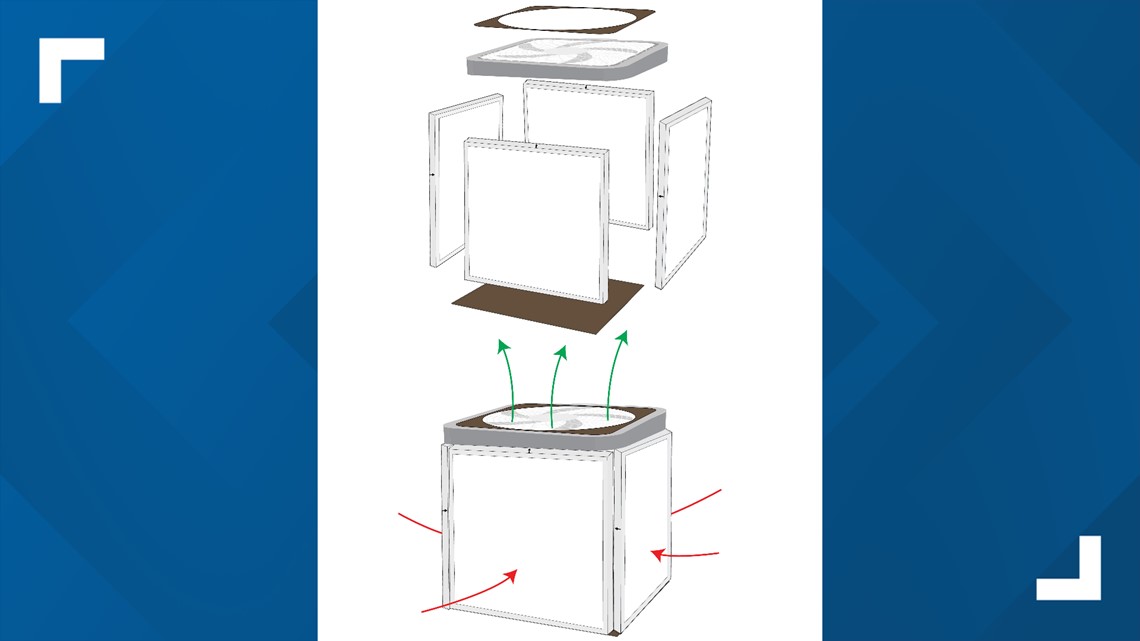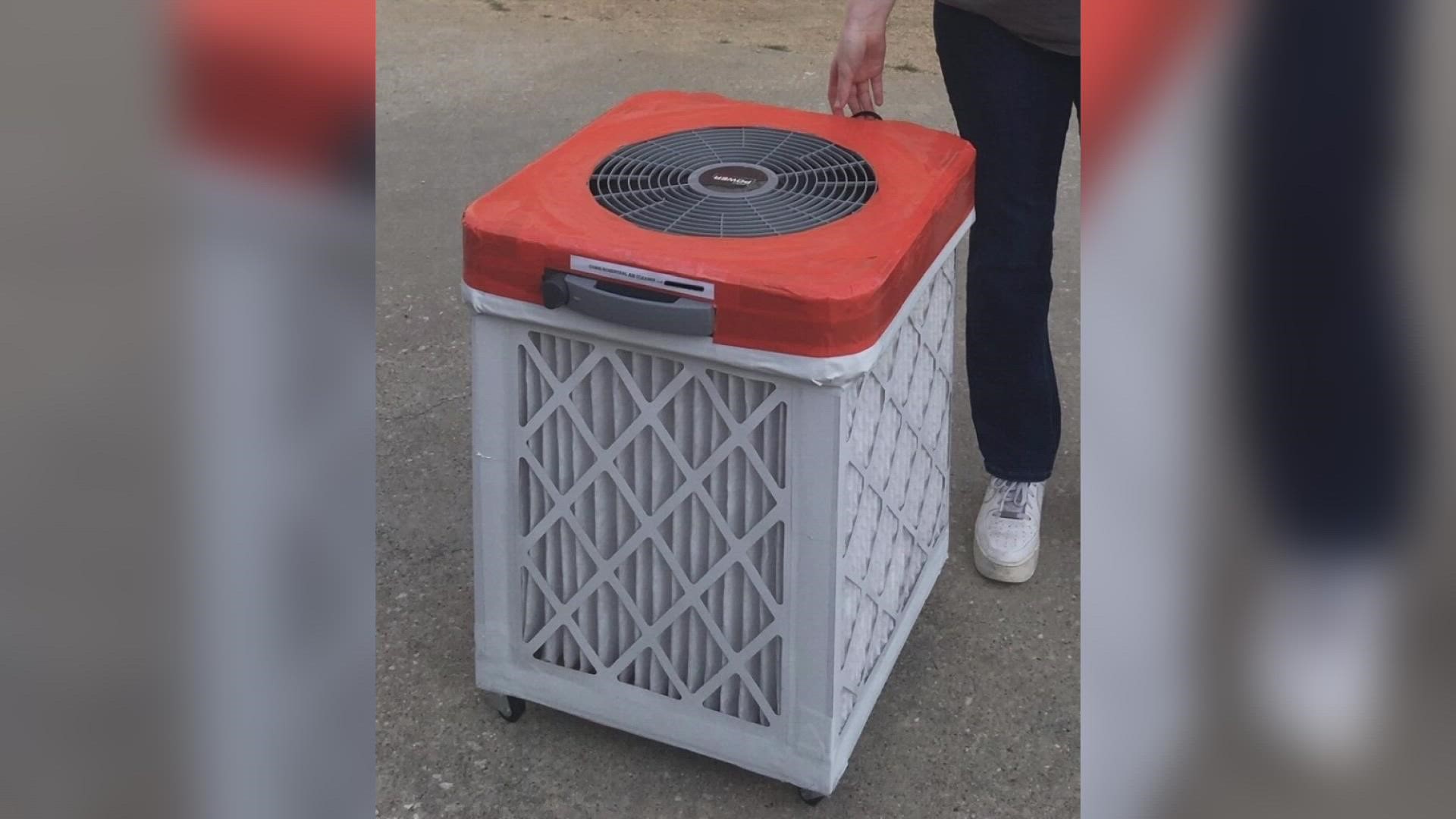DALLAS — Proper air ventilation and filtration are two important tools in the fight against airborne viruses.
Designed during the COVID-19 pandemic, a DIY air purifier known as a Corsi-Rosenthal box is becoming popular for its efficacy and inexpensive cost.
The purifier, which uses a box fan and MERV13 furnace filters, can help reduce airborne virus particles similarly to residential portable air cleaners, according to a case study by researchers at the University of California, Davis.
Researchers used a standard box fan modified into a cube with 2-inch filters on the fan intake. The total cost of materials was less than $75, which is roughly three times cheaper than residential portable air cleaners in terms of clean air delivered, the case study showed.
Instructions for Building a Corsi-Rosenthal Box
- Duct tape the filters together, forming an incomplete cube. Try to avoid taping over the filter media part of each filter.
- When taping the filters together, make sure to arrange each filter so that the air intake direction of the filter goes inward. The filters should indicate which direction the air is supposed to flow. So you want each filter's airflow direction to point into the cube, not out.
- There should be two empty sides of your incomplete cube. The box fan will go on one of these empty sides and the cardboard will go on the other.
- Cut your piece of cardboard to fit over the bottom area of the cube, where the cube will sit against the ground. Duct tape it to the bottom.
- Duct tape the box fan to the top of the cube. You want the fan to blow air out (not into) the cube. You can also place the fan on the side, rather than the top, of the cube (Figure 3). Having the fan point directly up into the air is a bit better because it's less obtrusive.
- Optional, but strongly encouraged (47% boost!): for increased performance you can create a "fan shroud." Cut a piece of cardboard so that the circle created by the fan blades is exposed but the edges of the fan are covered (see diagram or these instructions). You can also use duct tape on the fan to create this "shroud" as well. The optimal shroud opening has been determined based on the fan brand: For Lasko fans, cut the shroud with an internal diameter (Figure 4) of 15"; for Utilitech fans, use 13.5". For increased durability, you can use Coroplast (corrugated plastic) or 1/4 inch thick plywood to make the shroud.


Researchers noted that portable air cleaners are "a useful and easily accessible tool to reduce particulates in buildings," but they are not a substitute for the ventilation and filtration provided by HVAC systems.

